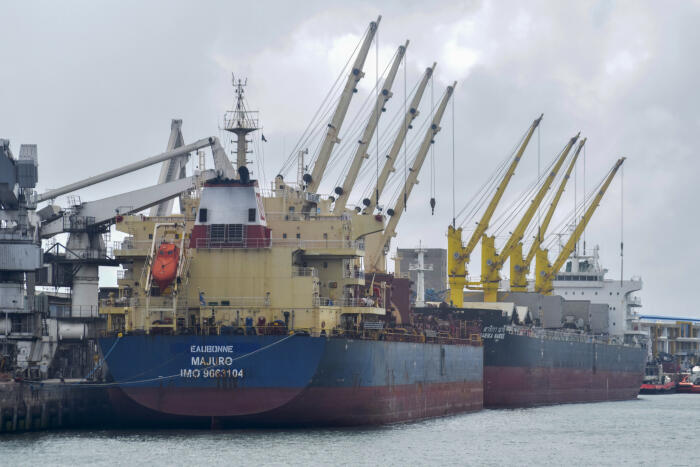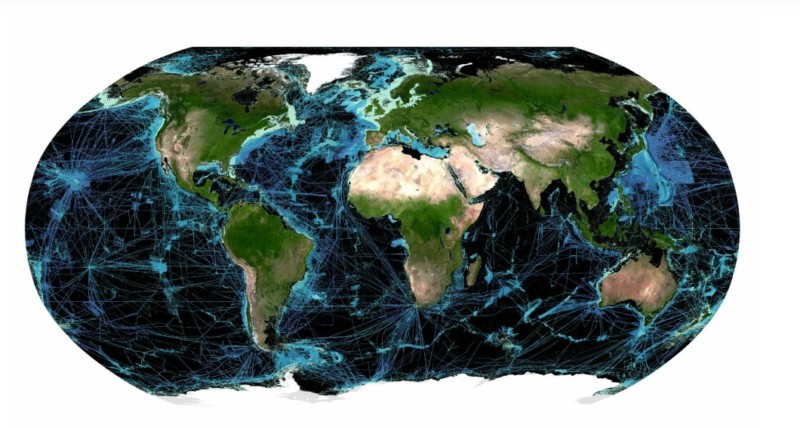Houthi attacks are painless in Mombasa, the major port of the Indian Ocean, whose activity is even supported by better economic and logistical conditions.
For once, the consequences of yet another global shock are not dramatic for Kenya, which has in recent years suffered severely, consecutively, from the repercussions of the Covid-19 pandemic, the war in Ukraine and then the inflationary crisis . Mombasa, its large port, located on the Indian Ocean and which irrigates all neighboring countries in the hinterland, as far as the Democratic Republic of Congo, has been preserved from attacks carried out since mid-November 2023 in the Red Sea by the Houthis, who have greatly reduced the activity of the Suez Canal.
“The impact has been very minimal for us due to our geographical location,” explains Elijah Mbaru, director general designate of the Kenya Shipping Agents Association (KSAA), which brings together major companies and many operators of this infrastructure -key for the country, regional economic locomotive of 55 million inhabitants. Crucial Europe-Kenya trade has continued, bypassing Africa via the Cape of Good Hope, while the ships that connect Asia to Europe, and therefore normally use the Suez Canal, generally do not stopover in Kenya.
Mombasa, underlines KSAA, has even recorded an increase: + 7% on the total volumes operated between the first quarters of 2023 and 2024 and, above all, + 32% with regard to containers, which represents around two thirds of the activity. But, again, this surge is not linked to the crisis in the Red Sea (rerouting of boats avoiding Red Sea ports, for example), insists Mr. Mbaru. “What is particularly increasing is transit freight to the Great Lakes regions, these landlocked countries tending to prefer Mombasa to Dar es Salaam, Tanzania,” which is experiencing logistical difficulties, he notes. . Before adding that the macroeconomic situation has also improved, the Kenyan shilling having recently recovered against the dollar, revitalizing imports.
Unfortunate setbacks for local industry On the other hand, like the global trend, freight prices have exploded in the region. A Shanghai-Mombasa journey cost $1,780 (1,640 euros) per 40-foot (12.20 meter) container in October 2023, according to KSAA. It currently stands at $5,000. And the bill rises to reach Kampala, Kigali or even Goma, in the Democratic Republic of Congo. For Jason Reynard, regional director of the logistician AGL (formerly Bolloré Logistics), this additional cost is not necessarily dramatically visible on the shelves, being distributed among the thousands of products contained in a “box”. Even if it is true, he notes, that « any additional cost is partly, if not entirely, ultimately passed on to the price paid by the consumer », in countries where budgets are already very tight. Read also | Article reserved for our subscribers World trade suddenly slowed down in 2023 Above all, Mr. Reynard points out the consequences for local industry of the delays caused by the rerouting of some of the ships via the Cape of Good Hope, and the disruptions on normally precise maritime routes. Unfortunate setbacks, particularly for exporters of fresh products, such as flowers or fruits and vegetables, or for factories. “Delays can range from two weeks to two months,” he says. If you are a Kenyan manufacturer expecting equipment by a certain date, you may be stuck, out of stock.
The impact [on prices] is probably greater than that of additional transport costs. » Read also | Article reserved for our subscribers In the Horn of Africa, the crisis in the Red Sea adds to multiple economic shocks Among the countries most penalized by this crisis are landlocked nations, such as Ethiopia (more than 123 million inhabitants, dependent for their supplies on their neighbors, Djibouti in the lead), and above all, further north, Egypt. “There, we can really talk about a disaster,” judges Elijah Mbaru. The revenues that Cairo derives from the passage of the Suez Canal had peaked at a record of nearly 9 billion dollars in the fiscal year 2022-2023, a precious inflow of foreign currency for this large country (110 million inhabitants) in economic difficulty. In mid-February, the president, Abdel Fattah Al-Sissi, estimated the loss of income between “40% and 50%” in comparison with the previous year. Since then, the authorities have not transmitted new figures, but the crisis in the Red Sea has taken hold.




